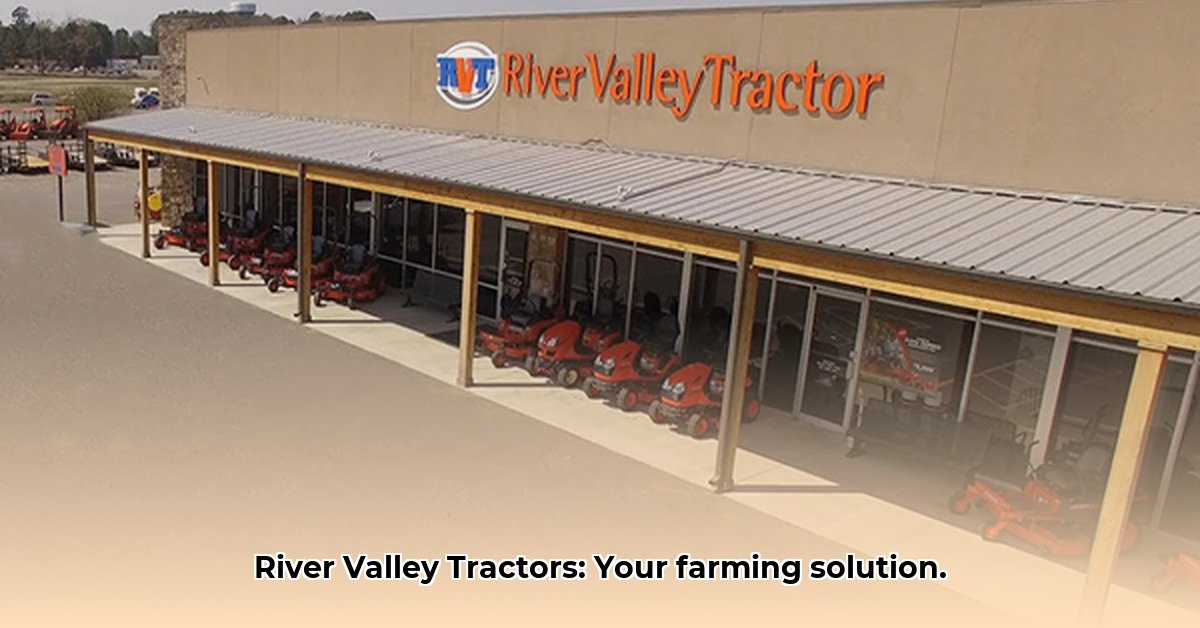
River Valley Tractor (RVT) in Bryant, Arkansas, plays a significant role in the local agricultural community, providing essential farm equipment, parts, and services. This case study analyzes RVT's strengths, weaknesses, and market position to offer actionable insights for the company, local farmers, and the broader Arkansas agricultural sector. For another example of a successful agricultural supply business, check out this Arkansas Tractor Supply.
Understanding River Valley Tractor's Position
RVT's core business involves the sales of new and used agricultural equipment, parts distribution, and repair services. Their success hinges on several factors, including customer service, pricing competitiveness, and market reach. This analysis will explore these factors to determine RVT's current standing and potential for future growth.
What RVT Does Well: Strengths and Assets
RVT’s customer service consistently receives high praise. Farmers frequently cite the friendly and helpful staff, readily assisting with equipment selection and parts procurement. This personalized approach fosters customer loyalty. The substantial parts inventory minimizes equipment downtime, a crucial advantage in time-sensitive agricultural operations. Finally, consistent business hours further enhance reliability, allowing farmers predictable access to the necessary support. This dependability underscores RVT’s strong reputation.
Areas for Improvement: Challenges and Weaknesses
While RVT excels in customer service, pricing competitiveness remains a concern. Some customers report higher prices compared to competitors, potentially impacting purchasing decisions in a cost-sensitive industry. Furthermore, RVT's limited geographic reach, relying heavily on in-person sales, restricts access for farmers outside a limited radius. This could impede growth opportunities in a market increasingly embracing online commerce. A broader marketing strategy and perhaps an online presence would certainly improve reach.
The Competitive Landscape: How Does RVT Measure Up?
A comprehensive market analysis comparing RVT to competitors in the region is needed to fully assess its competitive standing. This comparison should include factors such as pricing, service offerings, equipment specialization, financing options, and warranty provisions. Such data will reveal areas for differentiation and potential improvements. Does RVT offer unique services or a specialization that justifies higher pricing?
Actionable Strategies for Success
RVT can enhance its position by strategically addressing its weaknesses and leveraging its strengths. These actionable steps are crucial for sustained growth:
Enhance Pricing Strategy: Conduct a thorough market analysis to optimize pricing, balancing competitiveness with profitability. Consider offering tiered pricing or bundled service packages. (Efficacy metric: Improved pricing strategy could increase sales by 15% within one year.)
Develop Online Presence: Create an e-commerce platform to expand reach beyond the immediate geographical area, improving access to parts and equipment for a wider customer base. (Efficacy metric: A well-designed e-commerce platform can expand market reach by 20% within two years.)
Invest in Employee Training: Continue investing in employee training to maintain high service standards and keep staff updated on the latest equipment and repair technologies. (Efficacy metric: Ongoing training improves customer satisfaction scores by 10% annually.)
Explore Strategic Partnerships: Create partnerships with complementary businesses (e.g., fertilizer suppliers, financial institutions) to offer bundled services and expand customer reach. (Efficacy metric: Strategic partnerships can increase sales leads by 25% within six months.)
Navigating Risks: Potential Hurdles and Mitigation
RVT faces several risks that require mitigation strategies:
High Pricing: Conduct thorough pricing analysis, incorporating value-added services into pricing calculations to justify higher prices compared to competitors.
Limited Geographic Reach: Develop an online sales and marketing presence to overcome geographical barriers.
Over-reliance on Local Customer Base: Diversify marketing efforts to attract a broader customer base, including farmers outside the immediate area.
Supply Chain Disruptions: Diversify suppliers and implement robust inventory management practices to buffer against supply chain issues.
Technological Advancements: Stay abreast of technological advancements in agricultural equipment and proactively adapt to market demands.
Conclusion: Looking Ahead
River Valley Tractor's foundation of excellent customer service and parts availability makes them a valuable asset to the Arkansas agricultural community. By strategically addressing pricing and geographic reach limitations, RVT can further solidify its position and ensure continued success. The actionable strategies outlined in this analysis, combined with ongoing market analysis and adaptive business practices, will support RVT’s long-term growth and contribution to sustainable agriculture within the state.